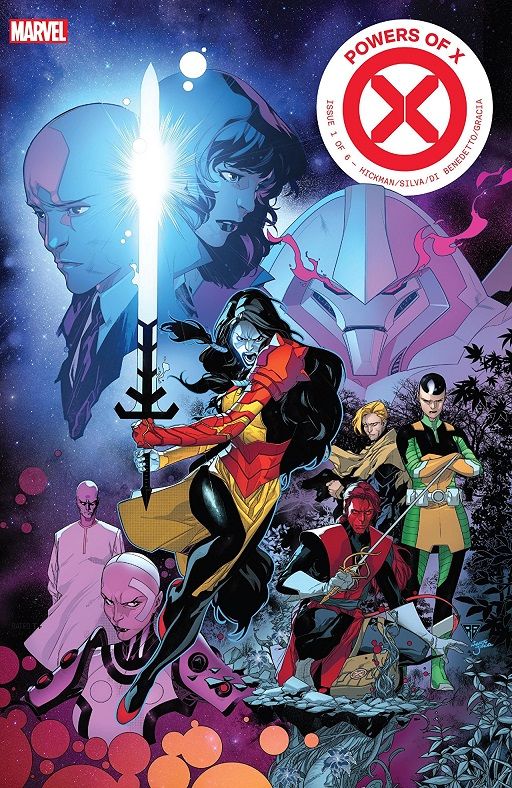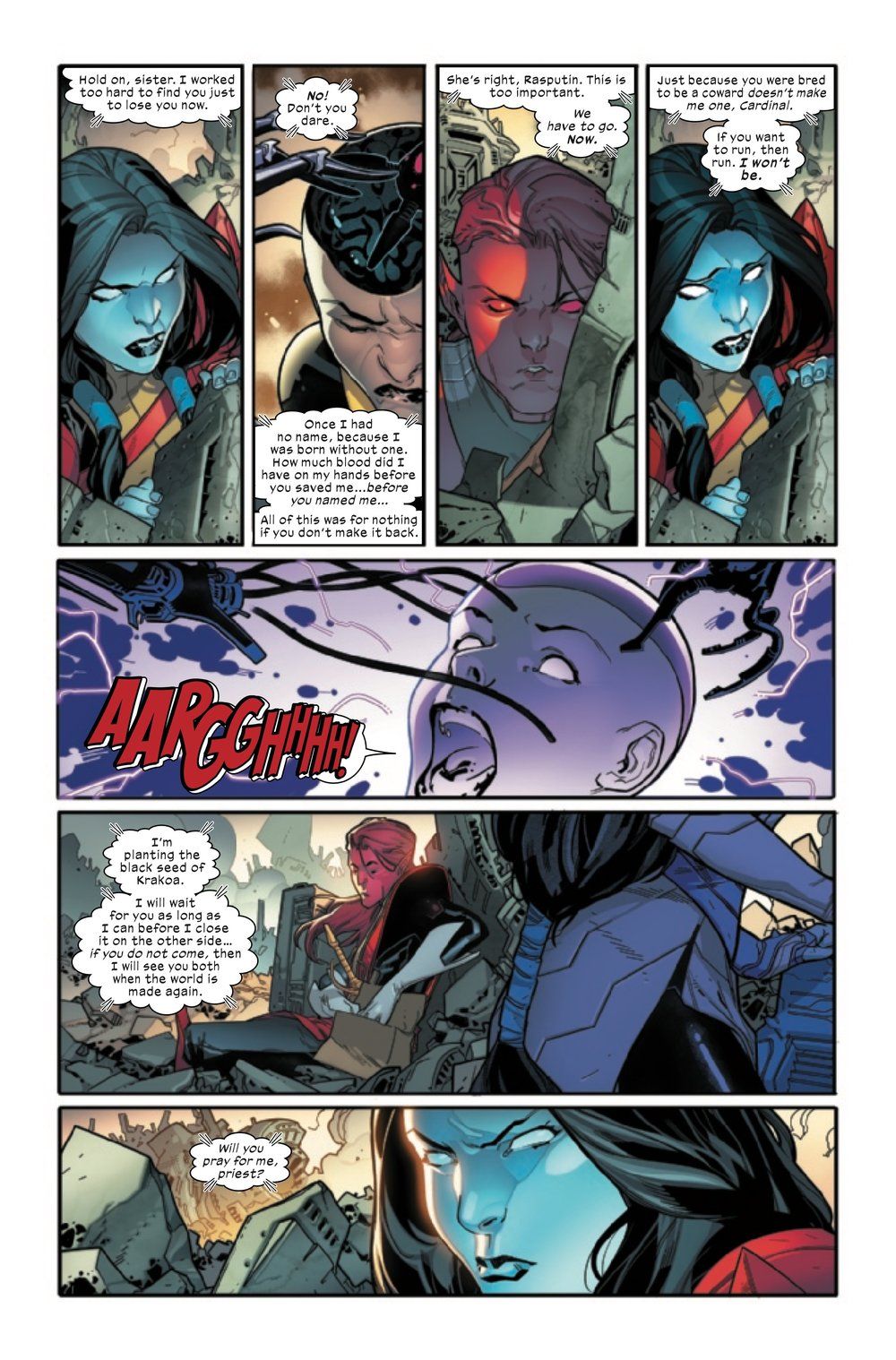REVIEW: Powers of X #1
- WRITER
- Jonathan Hickman
- Artist
- Tom Muller, Adriano Di Benedetto, R.B. Silva
- Letterer
- VC's Clayton Cowles
- Cover Artist
- Marte Gracia, R.B. Silva
- Publisher
- Marvel Comics
- Price
- 5.99
- Release Date
- 2019-07-31
- Colorist
- Marte Gracia
Marvel's Powers of X #1 is a difficult comic to discuss for two major reasons. The first is it has only vaguely introduced readers to a new concept in the X-Men universe, so while it is intriguing, how it will affect the rest of the series (and its sister title House of X) is yet to be seen. The other is that tackling the second installment in writer Jonathan Hickman's revamp of the franchise is a daunting task of the subject matter. Powers of X #1 is so weird and wonderful, it's tough to examine without letting some key plot elements slip. With that in mind, there will be some mild spoilers.
Much like the premiere issue of House of X, the second miniseries in Hickman's experiment, Powers of X #1 is pretty high concept. We are introduced to four different mutant timelines: now, 10 years from now, a hundred years from now, and a thousand years from now. Each new timeline introduces different versions of the X-Men, some of whom have been genetically altered or designed. The scope of each era is wider and more dire as time goes on.
Some of the new mutants we meet are captivating, and Hickman does a lot of character-building within few pages. It's actually quite amazing. He, along with artist R.B. Silva, is able to make readers care for these weird hybrid X-Men in the matter of a few panels. And despite the insane timelines, everything is cohesive if you're willing to buy into the general premise.
Powers of X #1 wears its inspiration on its sleeve, drawing from such iconic X-Men stories as Age of Apocalypse, "Days of Future Past" and myriad other far-flung tales set in the distant future. And while a lot of the struggle between humans and mutants is the same old song and dance from every other X-Men comic, Hickman and Silva make it all feel fresh and exciting, as if you're learning of this struggle for the first time all over again.
Now, this is not a jumping-on issue, by any stretch of the imagination. You will have to makes sure House of X #1 is under your belt, because Powers of X is a series that will not be able to stand on its own. That isn't due to a lack of creativity or needing to know decades of X-Men history to process what's happening on the page. No. You need House to get a little context for Powers. Now, that context doesn't fully explain the craziness on the page, but it does help you get a sense of place for at lest one of the four timelines in this issue.
Silva is doing solid work. The minimalist approach to pages, with stacked panels featuring character faces, is extremely effective, even if they are simple static shots. Hickman and Silva can captivate the reader without having a mutant throw a single punch. Tom Muller's design is also key here. The supplemental material in a Hickman comic is always important to the narrative, serving as footnotes to the larger story and a guide to help readers on their journey. Muller's book design utilizes this notes wonderfully; this book is gorgeous, top to bottom.
Powers of X #1 is a comic any X-Men fan should absolutely experience. It's bold, bizarre and confounding, in the best sort of way. With stellar art and layered storytelling, this (and House of X) should even entice those who are not too keen on how the X-Men have been portrayed the past few years.


